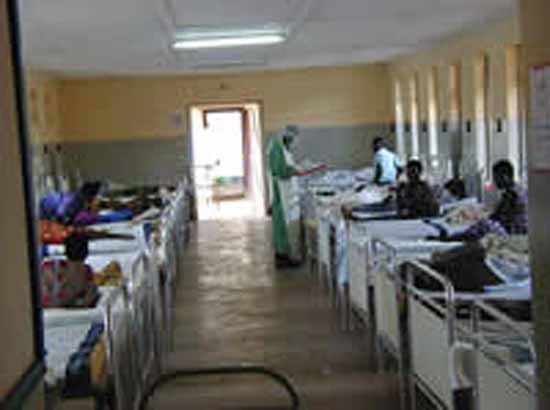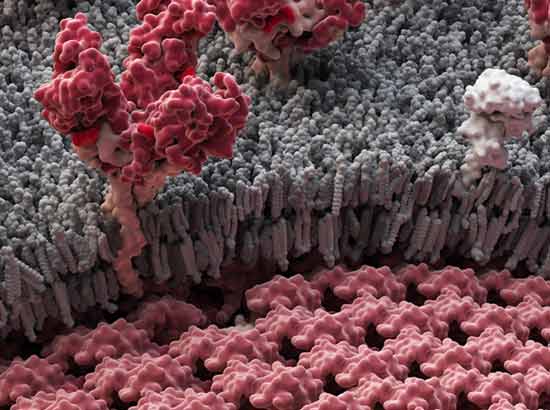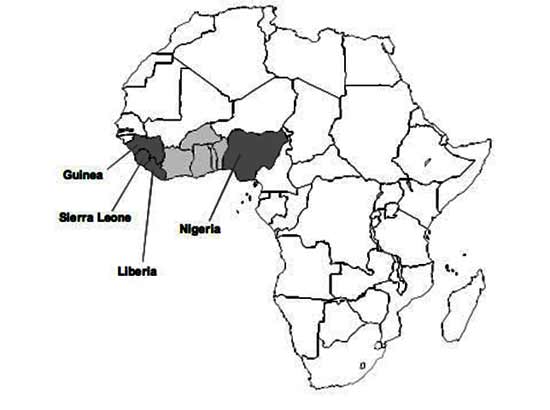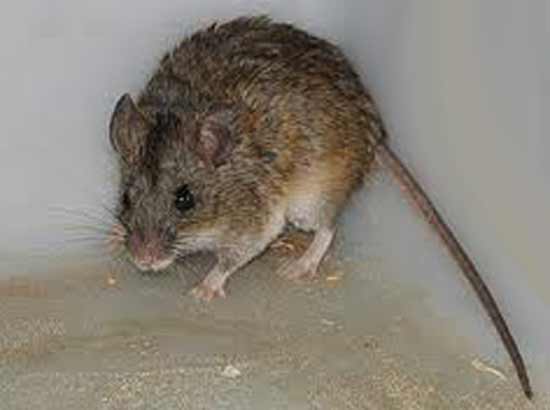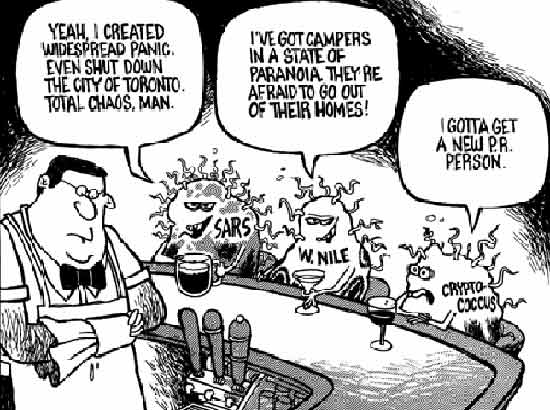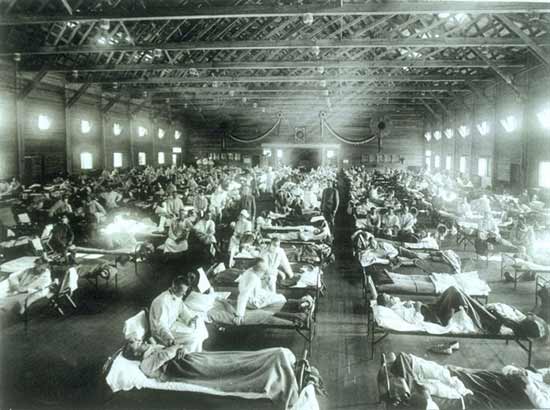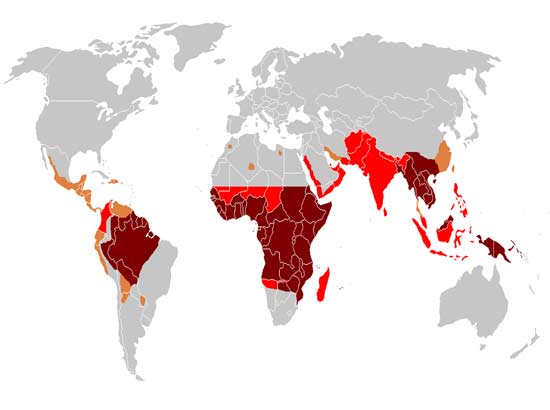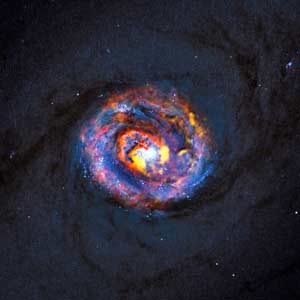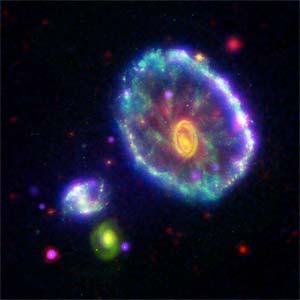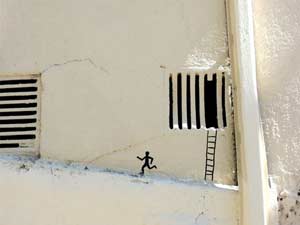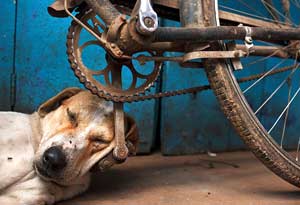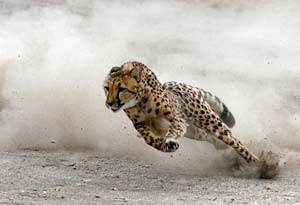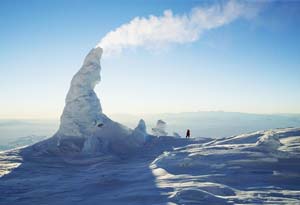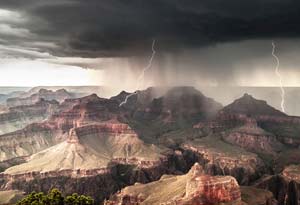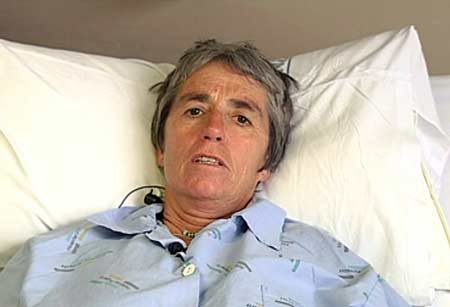It is more important to know what sort of person has a disease than to know what sort of disease a person has.
—Agents of Death
Aug. 13, 2014
A deadly disease is set to hit much of the northern hemisphere in the upcoming months, swamping hospitals, laying millions low. By this time next year 250,000-500,000 worldwide will be dead, thousands in the US and UK. The medical profession will do their best, but there’s no reliable cure and vaccines offer protection for no longer than a few months at best. Ebola? No, just seasonal, regular, garden variety, influenza.
Our fears about illness often bear little relation to our chances of falling victim, a phenomenon not helped by media coverage, which tends towards the novel rather than the particularly dangerous. The common diseases have far lower mortality rates but they kill a lot of people because huge numbers of people are infected.
It’s important to keep a sense of proportion.
Ebola
Ebola haemorrhagic fever is infamous for its high death toll and the ease with which it spreads among close contacts of the diseased if good hygiene isn’t present. Since the Ebola virus was discovered in 1976 (near the Ebola River valley during an outbreak in Zaire), the virus has persisted in Africa, with sporadic fatal outbreaks in humans and primates regularly reported.
Ebola’s evolutionary history is unclear. It’s known that infection starts with nonspecific flu-like symptoms (fever, general discomfort). As the disease progresses, rashes and aggravated inflammation appear. Damage to the liver and massive amounts of virus in the blood lead to widespread impaired blood clotting, so blood begins leaking into tissues. Terminal stages include serious diffuse bleeding and shock brought on by low blood pressure, which helps account for its high fatality rate (50%-90%).
Due to its lethal nature, Ebola is classified as a biological class 4 pathogen (this is the highest level) because it is dangerous, exotic, and causes severe to fatal disease in humans. There’s no vaccine or other treatment known (other than palliative care) and no FDA-approved antiviral drug at this time, though several are being trialled.
Incubation ranges from 2 to 21 days. Patients who are able to mount an immune response begin to recover in 7-10 days and start a period of prolonged convalescence. Infected patients are given hydration to maintain circulatory volume and blood pressure, and they sometimes need supplemental oxygen. Containment of this lethal virus is paramount. The fact that it progresses so rapidly further complicates its control, and it affords individuals little opportunity to develop acquired immunity.
There was an outbreak of Ebola in Uganda in 2000. Medical workers watched patients, did what they could, tried to keep things clean, and to warn the public how best to avoid infection. There were 26 cases within 2 months and about 70% died. But after returning to her home district, one infected woman became the origin of a chain within her extended family that made 18 more people sick plus 6 more healthcare workers and a friend of one of the medical staff.
Barrier nursing means that nurses wear gowns, masks, and gloves and observe strict rules that minimise the risk of spreading infection. Everything used to care for the patient is immediately placed in a bowl of sterilising solution, and attending nurses wash hands after attending an infectious patient. Bedding is carefully removed to minimise airborne particles and is cleansed with steam. Even after barrier nursing was set up, healthcare workers continued to get sick, probably due to cleaning the ambulance without full protective gear after transporting suspect cases (and smoking while doing so), washing the soiled linen of Ebola patients without full protective gear, and answering mobile phones while working in a contaminated section. The high death rate (76%) decreased after more care workers were recruited, but by then, fear, panic and mistrust had spread from the isolation ward into the community. A lot of valuable lessons were learned — though not by everyone.
The Liberian Council of Churches said in a statement last week that this outbreak of Ebola has Biblical implications. “God is angry with Liberia. Ebola is a plague. Liberians have to pray and seek God’s forgiveness over corruption and immoral acts such as homosexualism that continue to penetrate our society.” Many Liberians remain deeply distrustful of Western medicine, and don’t want to go to the hospital if they start feeling unwell. They’ve been told that government aid workers want to steal their kidneys. Several ill members went to a local church to pray their disease away (they all died within a few days). People ill with malaria, cholera, or diarrhoea have seen a rise in their death toll because early symptoms are the same as Ebola and, fearing they’ll be quarantined, they avoid seeking help. Now, schools have closed and many are quarantined and unable to go to work. The financial impact is huge. People are afraid and they are misinformed. They need help.
Of course, fears spread easily among the general public — even in the US. When the US Centers for Disease Control (CDC) mentioned that there may be 6 Ebola patients in the US (people who were “being watched”), a scare spread across the country. Some news agencies reported that there were 6 Ebola patients in New York alone (instead, there was 1 “being tested”). All 6 proved to be negative. Now, others are “being watched”. Is the government hiding news of those who are ill to prevent panic? (Fear and misinformation again.)
The potential for widespread Ebola infection is considered very low as the disease is only spread by direct contact with the secretions from someone who shows signs of infection. Nevertheless, I read on an alien-conspiracy-type site that Canada’s Public Health Agency had stated that “airborne spread among humans is strongly suspected, although it has not yet been conclusively demonstrated.” Oh? I went to the Canadian site and could find no such comment. Screen what you read!
But…
Researchers from the National Centre for Foreign Animal Disease, the University of Manitoba, and the Public Health Agency of Canada, did possibly observe transmission of Ebola from pigs to monkeys. They first inoculated a number of piglets with the Zaire strain of the Ebola virus, then placed them in cages in a room with 4 monkeys commonly used in laboratories in individual cages. Within a few days, the piglets showed clinical signs of infection indicative of Ebola. Within 8 days of exposure, 2 of the monkeys looked sick and soon the remaining 2 monkeys did, too. Should we be worried?
There are 3 likely candidates for the route of virus transmission: airborne, droplet, or fomite. Airborne and droplet transmission both technically travel through the air but the difference lies in the size of the infective particles. Smaller droplets persist in the air longer and are able to travel farther. These droplets are truly “airborne.” Larger droplets can neither travel as far nor persist for long. Fomites are inanimate objects that can transmit disease if they are contaminated with infectious agents.
In this study, a monkey’s cage could have been contaminated when workers cleaned a nearby pig cage. If the monkey touched the contaminated cage surface and then its mouth or eyes, it could have been infected. Evidence of infection in the lungs of the monkeys indicated that the virus was inhaled, implying droplets may have been the cause (such as a juicy sneeze nearby). What might this mean? First and foremost, Ebola is not suddenly an airborne disease. If it were, this fact would be immediately apparent out in the world. Furthermore, because human Ebola outbreaks have historically been locally contained, it’s unlikely that Ebola spreads between humans via any type of airborne transmission. In fact, a later study by the same group concluded that there was no airborne transmission between primates, strengthening the evidence that Ebola isn’t a risk in this manner. This means that if hygiene rules are followed, this outbreak of the disease will die out again.
More fear and misinformation: Another article I read stated that “President Barack Obama signed an amendment to an executive order that would allow him to mandate the apprehension and detention of Americans who merely show signs of ‘respiratory illness.’” (Get a cold, go to solitary confinement?)
Actually, Obama’s amendment allowed for the detention of Americans who display, “Severe acute respiratory syndromes, which are diseases that are associated with fever and signs and symptoms of pneumonia or other respiratory illness, are capable of being transmitted from person to person, and that either are causing, or have the potential to cause, a pandemic, or, upon infection, are highly likely to cause mortality or serious morbidity if not properly controlled.” A good thing or a bad thing? This article seemed to feel it was both at once (it can “turn governors into dictators”). How should the amendment have been worded? Or should the seriously ill be allowed to fly wherever and whenever they like? When people are frightened or ill, they don’t think clearly.
British Airways has now cancelled flights to Sierra Leone and Liberia until the end of August, due to “the deteriorating public health situation in both countries.” Last week, the World Health Organization issued guidelines for airlines: If a passenger is diagnosed with Ebola after the flight, all passengers on the same flight should be tracked down and tested. Immigration and health officials at airports as far away as India, Australia, Russia, the Philippines, Myanmar, Macedonia, and elsewhere are screening passengers for signs of sickness or elevated temperatures. CDC workers in Africa are helping them to screen airport passengers. Airline cleaning crews are instructed to wear disposable gloves and disinfect arm rests, seat backs, trays and light switches if any passenger is sick. (Is that sufficient? It seems to be.) The World Health Organisation didn’t recommend any travel or trade bans but said people who’ve had close contact with Ebola patients shouldn’t travel internationally. This is just common sense.
Meanwhile, CDC head Dr Thomas Frieden argues that it is unlikely people sick with Ebola will board planes, because the symptoms are so debilitating. Of those that do, airline employees and/or the CDC are scrutinizing them before boarding, during the flight, and upon arrival.
And there may be better means of control on the horizon. Two independent studies show that Ebola virus cell entry and replication requires the cholesterol transporter protein NPC1. When cells from patients lacking NPC1 were exposed to Ebola virus in the lab, they survived and appeared immune. This might imply that genetic mutations in the NPC1 gene in humans could make some people resistant. The same studies describe similar results with Ebola’s cousin, the Marburg virus, showing that it, too, needs NPC1 to enter cells. Perhaps this knowledge can be developed into a means of prevention.
A Bit about Viral Haemorrhagic Fevers (VHF) in General
VHFs are a diverse group of animal and human illnesses caused by 5 distinct families of RNA viruses. All types are characterised by fever and bleeding disorders and all can progress to high fever, shock and, all too often, death. Some of the agents cause relatively mild illnesses, while others, such as Ebola, cause severe, life-threatening disease.
Families of RNA viruses that been shown to cause haemorrhagic fevers.
- Arena includes the viruses responsible for Lassa, Lujo, Argentine, Bolivian, Brazilian, and Venezuelan haemorrhagic fevers.
- Bunya includes the members of the Hantavirus genus, the Crimean-Congo haemorrhagic fever virus, and some others (a few apparently one-offs).
- Filo includes Ebola and Marburg.
- Flavi includes dengue and yellow fevers, and two viruses in the tick-borne encephalitis group that cause VHF: Omsk and Kyasanur Forest disease.
- Rhabdo was responsible for 2 fatal and 2 non-fatal cases of haemorrhagic fever in the Democratic Republic of Congo a couple of years ago. The non-fatal cases occurred in healthcare workers involved in the treatment of the other two, suggesting the possibility of person-to-person transmission. Little is known and the disease has apparently not reappeared. Rhabdo also includes the rabies virus.
Broken down by area:
African
- Crimean-Congo haemorrhagic fever is a widespread tick-borne viral disease that may affect humans, usually severely, with a 30% mortality rate. This virus has been around for thousands of years and has been isolated from 31 different species of ticks. It most frequently occurs in agricultural workers.
- Ebola haemorrhagic fever was first identified in 1976. From then through 2013, fewer than 1,000 people per year have been infected. The largest outbreak to date is occurring right now and affects Guinea, Sierra Leone, Liberia and Nigeria. As of August 2014, more than 1,750 suspected cases have been reported and around 1,000 have died. Efforts are ongoing to develop a vaccine.
While Ebola may have our attention right now, it isn’t even close to being the biggest problem in Africa — Lassa fever shares many of the terrifying symptoms of Ebola (including bleeding from the eyelids), kills many more people than Ebola, and frequently finds its way to the US.
- Lassa causes Lassa haemorrhagic fever, which requires Biosafety Level 4-equivalent containment. It’s endemic in West African countries, where the annual incidence of infection is between 300,000 and 500,000 cases, resulting in 5,000 deaths per year. Upon entry, it infects almost every tissue. The primary animal host is a small mouse; it’s probably transmitted by contact with faeces left by mice stealing grain inside houses. It’s a major ongoing problem.
- Lujo is a haemorrhagic fever virus whose name uses the first 2 letters of the names of the cities involved in its initial 2008 outbreak, Lusaka (Zambia) and Johannesburg (Republic of South Africa). It’s in the same family as Lassa.
- Marburg causes a viral haemorrhagic fever and is considered a bioterrorism agent. Old world grivet monkeys kept in an industrial plant in Germany in the 1960s were the initial known vector. Marburg is also spread by fruit bats (when they aren’t too busy spreading Ebola). The human mortality rate varies from 23-100%. The Soviet Union extensively weaponised Marburg and after the collapse of the Soviet Union, research has continued.
Asian
- Kyasanur Forest disease, also known as monkey fever, is tick-borne, endemic to South Asia, and a close cousin to dengue and yellow fevers. A variety of animals are thought to be reservoir hosts, including porcupines, rats, squirrels, mice, and shrews. It has a morbidity rate of 2-10% and affects 100-500 people annually.
- Omsk haemorrhagic fever, found in Siberia, survives in water and is transferred to humans via dirty water or an infected tick. In 1–2 weeks, some patients recover while others experience haemorrhaging in gums, uterus, and lungs, a rash on the soft palate, enlarged lymph nodes in the neck, and occasional neurological involvement. If the patient is still sick after 3 weeks, a second wave of symptoms occurs including encephalitis. If the patient recovers, he may experience hearing and hair loss and behavioural or psychological difficulties. If he’s still sick, he will die. This infection is highly contagious.
South American
- Argentine haemorrhagic fever, also known as stubble disease, has a mortality rate of 15–30% if left untreated. Its vector is the corn mouse. Both the US and Russia researched it as a potential biological weapons before suspending their biological weapons programmes (more or less). A vaccine is available.
- Bolivian haemorrhagic fever, also known as black typhus, has a mortality rate of 5-30%. Vesper mice are vectors. No officially approved drugs exist.
- Brazilian haemorrhagic fever is highly infectious and highly lethal. Caused by the Sabiá virus, it’s thought to be transmitted by the excreta of rodents. In 1990, a female agricultural engineer staying in the Jardim Sabiá neighbourhood near São Paulo contracted the disease and died. Her autopsy showed liver necrosis. A virologist studying her remains contracted the virus but survived. Four years later, a researcher was exposed to the virus in a level 3 biohazard facility at Yale University when a centrifuge bottle cracked, leaked, and released aerosolised virus particles. He was successfully treated with ribavirin. This virus can be spread through aerosols, so it’s really bad.
- Chapare haemorrhagic fever is caused by the Chapare virus, so named because the only known outbreak occurred in the Chapare province of Bolivia in 2003. A small number of people were infected. One person died. The specific vector isn’t known, but is probably a rodent.
- Venezuelan haemorrhagic fever, most prevalent in central Venezuela, is caused by the Guanarito virus. The short-tailed cane mouse is the main host. The virus can be spread by inhalation of aerosolised saliva as well as all the regular ways, so person-to-person spread is possible. The fatality rate is about 30%. A vial of the virus unexpectedly disappeared from the University of Texas Medical Branch Galveston National Laboratory in March 2014. It has a biosafety level of 4 (the highest).
“Select Agents”
Under US law, “Biological Select Agents or Toxins” — or simply Select Agents for short — are bio-agents which, since 1997, have been declared by the US Department of Health and Human Services or by the US Department of Agriculture to have the “potential to pose a severe threat to public health and safety”. These bio-agents are divided into 3 broad categories:
(1) affecting humans;
(2) affecting agriculture; and
(3) affecting both.
Select agents can be naturally-occurring diseases — in fact, practically all the haemorrhagic fevers are listed along with certain bacteria, some other types of viruses, some toxins (including ricin, shiga, staphylococcal enterotoxins) and so-called overlap agents including anthrax, brucella, and other nasty-sounding things. These could pose a threat to the public, whether encountered accidentally or via the actions of bioterrorists. An “Advisory Board for Biosecurity” has been set up to keep research on deadly diseases from publishing something in a scientific journals that may enable bioterrorists to develop a more effective means of disbursal.
These are some I found interesting.
Bacteria
- Black Death / Bubonic plague takes 3 forms:
Pneumonic (respiratory via inhalation, can spread person to person, virtually 100% fatality without immediate antibiotics).
Septicemic (blood stream via eating infected animal or being bitten by infected flea, virtually 100% fatality without immediate antibiotics).
Bubonic (lymphatic via a flea vector, 67% fatality within 4 days without treatment).
Some of the earliest instances of biological warfare were said to have been products of the plague, as armies of the 14th century catapulted diseased corpses over town and village walls to spread pestilence. In the early 1940s, plague was used as a bacteriological weapon by the Imperial Japanese Army, who dropped infected fleas on selected Chinese towns. In 1980 a California woman died of the plague, which she apparently caught from her cat. She continued to work at her job in a day care centre even after feeling ill. However, none of the children got sick.
- Botulism can reduce signs of ageing, produce ethanol from cellulose waste, produce acetone from starch, fight cancer, and many more benefits. Or it can cause colitis, food poisoning, gangrene, and tetanus.
- Epidemic typhus is transmitted in the faeces of lice (flying squirrels are a known source). This bacteria appears to be the closest free-living relative of mitochondria, the most important bacteria of all to humans because it lives in our cells and provides them with energy. Immunity following infection or vaccine inoculation is generally lifelong.
- Q fever is a pathogen resistant to high temperature, disinfectants, filtering, and ultraviolet light. The dose needed to infect 50% of experimental subjects is 1 via inhalation; i.e., inhalation of 1 organism will yield disease in 50% of the population. The US ended its biological warfare programme in 1969. Q fever was one of 7 agents standardised as a biological weapon. Disease occurs in 2 stages: acute presenting with headaches, chills, and breathing difficulties, and chronic. While most infections clear up spontaneously, treatment with antibiotics reduces the duration of symptoms and the likelihood of chronic infection. There seems a bit unsaid about this — why a biological weapon if it isn’t that bad? Was it changed somehow?
Viruses
Coronavirus
- SARS (severe acute respiratory syndrome) causes severe illness. In the outbreak of 2003, about 10% of patients died. The mortality rate was much higher for those over 50 (approaching 50% for this subset). Antibiotics are ineffective (SARS is viral). Treatment is largely supportive with fever reduction, supplemental oxygen, and mechanical ventilation used as needed. The Pasteur Institute in Paris, France realised in April of this year that it was apparently missing 2,000 vials of SARS virus fragments. While the fragments weren’t considered dangerous, it did raise concerns about the lab’s security procedures.
Encephalitis viruses
- Triple E was first recognised in Massachusetts, USA in 1831 when 75 horses died of encephalitic illness. In 1938, the first confirmed human cases were identified when 30 children died in the northeast US. These cases coincided with outbreaks in horses in the same regions. The fatality rate in humans is 35% and 1/3 of survivors develop permanent brain damage. There’s currently no cure.
Influenza viruses
- H5N1 (Avian) influenza is a subtype of the influenza A virus which can cause illness in humans and animals. A bird-adapted strain is the highly pathogenic causative agent commonly known as bird flu. Thus far, there’s “no evidence of sustained human-to-human transmission”. Several H5N1 vaccines have been developed, approved, and stockpiled by a number of countries, including the US, Britain, France, Canada, and Australia, for use in an emergency. Research has shown that a highly contagious strain allowing airborne transmission between mammals can be reached in only a few mutations, raising concerns about a pandemic and bioterrorism (the UN warns that 5-150 million people could be killed; it’s currently the world’s leading pandemic threat). The fatality rate is around 60%. H5N1 may cause multiple pandemics, as it’s expected to continue mutating in birds regardless of whether or not humans develop herd immunity to a future strain.
- (Reconstructed) 1918 influenza (Spanish flu) is an unusually deadly influenza strain that caused the first of the two pandemics involving the H1N1 virus. It infected 500 million people worldwide, including remote Pacific islands and the Arctic, killing 50-100 million (3-6% of the world’s population) making it one of the deadliest natural disasters in history. Modern research examined virus taken from bodies of frozen victims, concluding that it killed through a cytokine storm (overreaction of the immune system). The strong immune reactions of young adults ravaged their bodies, whereas the weaker immune systems of children and older adults resulted in fewer deaths. To maintain morale, wartime censors minimised early reports of illness and mortality in Germany, Britain, France, and the US, but papers were free to report effects in neutral Spain, creating a false impression of Spain being especially hard hit, thus the pandemic’s nickname Spanish flu. A modern day event would result in life insurance losses of US$15-30 billion and loss of 188,000–337,000 lives in the US alone.
Orthopoxviruses
- Smallpox was an infectious disease caused by either of two virus variants, Variola major (an overall mortality rate of 30-35%) and Variola minor (a milder version with a mortality rate of less than 1%). Those who lived were usually left with major facial scarring and often blindness and limb deformities. The last naturally occurring case of either type of smallpox was diagnosed in October 1977. But then a medical photographer, Janet Parker, contracted the disease at the University of Birmingham Medical School and died on 11 September 1978, after which Professor Henry Bedson, the scientist responsible, committed suicide. In light of this incident, all known stocks of smallpox were destroyed or transferred to laboratories which had BSL-4 facilities. (Well, except for 6 vials that turned up in July in a cardboard box in an unsecured FDA freezer where they’d been languishing since the 1950s.)
Smallpox is believed to have emerged about 10,000 BC. The earliest physical evidence is probably the mummified body of Pharaoh Ramses V of Egypt. It killed an estimated 400,000 Europeans annually during the closing years of the 18th century (including 5 reigning monarchs), and caused 1/3 of all blindness. Of those infected, 20–60% (and over 80% of children) died. It killed an estimated 300–500 million people during the 20th century. As recently as 1967, the World Health Organization (WHO) estimated that 15 million people had contracted smallpox and 2 million had died in that year.
Smallpox was introduced into the Caribbean island of Hispaniola in 1509, and into the mainland in 1520, when Spanish settlers from Hispaniola arrived in Mexico bringing smallpox with them. Smallpox devastated the Native American population and was an important factor in the conquest of the Aztecs and Incas by the Spaniards. Settlement of the east coast of North America in 1633 in Plymouth, Massachusetts was accompanied by devastating outbreaks of smallpox among Native Americans. Fatality rates were as high as 80–90%.
When dealing with dangerous biologicals, the use of a positive pressure personnel suit with a segregated air supply is mandatory. The entrance and exit of a level 4 biolab contain multiple showers, a vacuum room, an ultraviolet light room, and other safety precautions designed to destroy all traces of the biohazard. Multiple airlocks are employed, electronically secured to prevent both doors from opening at the same time. All air and water coming from a high-level lab undergoes decontamination to eliminate the possibility of accidental release.
Such labs exist in Australia (4), Belarus, Canada, China, Czech Republic, France, Gabon, Germany (4), India (4), Italy (2), Japan (2), Netherlands, Romania (2), Russian, South Africa, South Korea, Sweden, Switzerland (2), Taiwan (2), UK (8), USA (at least 14 + 1 under construction). Approximately 36% of these laboratories are located in academia.
Special Mentions
- Malaria is mosquito-borne and infectious commonly transmitted by a bite from an infected female Anopheles mosquito via its injected saliva. Parasites reproduce in the liver. It causes fever and headache, and, if severe, can progress to coma or death. It’s common in tropical and subtropical regions because rain, warm temperatures, and stagnant water provide an environment ideal for mosquito larvae. No effective vaccine exists, although efforts to develop one are ongoing. It’s found in much of Sub-Saharan Africa, Asia, and the Americas. The World Health Organization estimates that in 2010 there were 219 million documented cases of malaria (other estimates say between 350 and 550 million). That year, between 660,000 and 1.2 million people died, many of them African children. In the most severe cases, fatality rates can reach 20%, even with intensive care and treatment. Cerebral malaria (a severe form) is one of the leading causes of neurological disabilities in African children. Studies comparing cognitive functions after recovery from severe malarial illness show significantly impaired school performance. Consequently, it has far-reaching socioeconomic consequences that extend beyond the immediate effects of the disease. (Just so you know: Electronic mosquito repellent devices which make high frequency sounds that supposedly keep female mosquitoes away, have no supporting evidence.)
- Tuberculosis is a widespread, and in many cases fatal, infectious disease caused by various strains of mycobacteria, which typically attack the lungs, but can also affect other parts of the body. If left untreated, it kills more than 50% of those infected. Treatment is difficult and requires administration of multiple antibiotics over a long period of time. (Now, antibiotic resistance is a growing problem.) The main cause of TB is a small, aerobic, non-motile bacillus, which can withstand weak disinfectants and survive in a dry state for weeks. It’s closely linked to both overcrowding and malnutrition, making it one of the principal diseases of poverty. When people with active pulmonary TB cough, sneeze, speak, sing, or spit, they expel infectious aerosol droplets 0.5 to 5.0 µm in diameter. A single sneeze can release up to 40,000 droplets, each of which may transmit the disease. In 2010, 8.8 million new cases of TB were diagnosed, and 1.20-1.45 million deaths occurred, most in developing countries. Tuberculosis is the second-most common cause of death from infectious disease (after those due to HIV/AIDS). Skeletal remains show prehistoric humans (4000 BC) had TB, and researchers have found tubercular decay in the spines of Egyptian mummies dating from 3000–2400 BC.
In Conclusion
Since the Ebola outbreak began in February, around 300,000 people have died from malaria, while tuberculosis has likely claimed over 600,000 lives. But those are far from the only things killing people off in large numbers.
A healthcare-acquired (nosocomial) infection is an infection acquired by a patient during a hospital or doctor’s office visit or by someone who lives in a nursing home. In the US, the CDC estimates roughly 1.7 million healthcare-associated infections, from all types of microorganisms cause or contribute to 99,000 deaths each year. This puts the rate in the US at about 10% of patients. In other countries, that rate varies from 2-14%. In Europe, where hospital surveys have been conducted, the category of Gram-negative infections are estimated to account for 2/3 of the 25,000 deaths each year. An estimated 14,000 patients die in US hospitals each year from Clostridium difficile spread by diarrhoea. Invisibly small faecal particles contaminate bedrails, curtains, nurses’ uniforms and other surfaces, carrying the disease from one patient to another.
According to another study, sepsis and pneumonia, two common conditions caused by hospital-acquired infections like MRSA, killed 48,000 Americans in 2006, and cost the nation billions of dollars to treat. In 2012, antibiotic-resistant MRSA infections killed more Americans than emphysema, HIV/AIDS, Parkinson’s disease, and homicide combined. Many could have been avoided with better infection control.
Developing sepsis after surgery resulted in an average of 11 extra days in hospital and an additional infection treatment cost of $33,000 per patient. The most alarming finding was that 20% of people who develop sepsis following surgery die as a result. In some cases, relatively healthy people check into a hospital for routine surgery then they develop sepsis because of a lapse in infection control — and many of them die. Why? Mostly money. Reductions in federal Medicare and Medicaid payments to hospitals causes great pressure. Typically, prevention has been underfunded compared to high technology and procedures. Infection prevention is very cost effective, but is seen by some administrators as a net cost, not a revenue generator.
If even 1,000 patients die from Ebola in the US, there’ll likely be panic. But tens of thousands can die each year in the US alone through careless procedures without too many alarms sounding. They’re not generally epidemic. They’re not the kind of sudden burst of disease and death that creates fear.
Our fears often bear little relation to reality.
Sources:
The Distillery
Active Galaxies
- This detailed view shows the central parts of the nearby active galaxy NGC 1433. The dim blue background image, showing the central dust lanes, comes from the NASA/ESA Hubble Space Telescope. The coloured structures near the centre are from recent ALMA observations that have revealed a spiral shape — as well as an unexpected outflow — for the first time. The centre is thought to contain a black hole.
- The Cartwheel is one of the most powerful UV-emitting galaxies in the nearby universe. This false-colour composite image shows it as seen by the Galaxy Evolution Explorer’s far ultraviolet detector (blue), the Hubble Space Telescope’s wide field and planetary camera 2 in B-band visible light (green), the Spitzer Space Telescope’s infrared array camera at 8 microns (red), and the Chandra X-ray Observatory’s advanced CCD imaging spectrometer-S array instrument (purple). Approximately 100 million years ago, a smaller galaxy plunged through the heart of the Cartwheel galaxy, creating ripples of brief star formation. The first ripple appears as an ultraviolet-bright blue outer ring. Associations of stars 5 to 20 times as massive as our sun are forming in this region. Clumps of pink along the outer blue ring are regions where both X-rays and ultraviolet radiation are superimposed, very likely collections of binary star systems containing black holes. The yellow-orange inner ring and nucleus at the centre result from the combination of visible and infrared light. This region of the galaxy represents the second ripple, or ring wave, created in the collision, but has much less star formation than the outer ring. The wisps of red are organic molecules; the tints of green are older, visible-light stars.
- Multiple images of a distant quasar are visible in this combined view from NASA’s Chandra X-ray Observatory and the Hubble Space Telescope. The Chandra data, along with data from ESA’s XMM-Newton, were used to directly measure the spin of the supermassive black hole powering this quasar. This is the most distant black hole where such a measurement has been made. Gravitational lensing by an intervening elliptical galaxy offers a rare opportunity to study regions close to the black hole in distant quasars, by acting as a natural telescope and magnifying the light from these sources. The quasar is known as RX J1131-1231 (RX J1131 for short), located about 6 billion light years from Earth. The X-rays are produced when a swirling accretion disk of gas and dust that surrounds the black hole creates a hot corona near. The X-rays are coming from a region located only about 3 times the radius of the event horizon, so the black hole must be spinning extremely rapidly (over half the speed of light) to allow a disk to survive that close. This implies it was formed from mergers between galaxies rather than small accretion episodes.
Our Neighbour, Saturn
- A hexagon structure is located on Saturn’s North Pole; it was first seen by the Voyager missions when they passed Saturn in the 1980s. Twenty-five years later, Cassini also imaged the hexagon. Oxford researchers recreated the hexagon phenomena with a slow-spinning cylinder of water and a smaller rapidly-spinning ring. By adjusting the speed of the ring, they changed the shape produced in the water. Such occurrences are commonly seen in hurricanes and in the polar vortex. Low-lying clouds circling inside the hexagonal feature appear as muted orange colour.
- A fascinating thing about Saturn is that there isn’t a hexagon structure located its South Pole. Instead, there is a hurricane type structure. Measurements have sized the eye at a staggering 1,250 miles (2,000 kilometres) across with cloud speeds as fast as 330 miles per hour (150 metres per second). The view was acquired at a distance of approximately 261,000 miles (419,000 kilometres) from Saturn.
- This year the orbits of the moon and Saturn have led to an unusually high number of alignments of the ringed giant behind Earth’s largest satellite. Technically termed an occultation, the above image captured one such photogenic juxtaposition from Buenos Aires, Argentina that occurred early last week. Visible to the unaided eye but best viewed with binoculars, there are still 3 more eclipses of Saturn by our moon left in 2014. The last one was on 4 August 4 and was visible from Australia. The next one will occur on 31 August and be visible from western Africa at night and simultaneously from much of eastern North America during the day.
- Earth appears as an insignificant and miniscule-looking dot below Saturn’s majestic rings in a breathtaking new image from NASA’s Cassini spacecraft. The stunning picture was captured by the probe’s wide-angle camera from a distance of 900 million miles (1.448 billion kilometres). Magnifying the image 5 times reveals not only the Earth but also the moon, a fainter smudge to the right of the planet. The new image marked the first time people on Earth knew in advance that their planet’s portrait was being taken from interplanetary distances. NASA invited members of the public to acknowledge the occasion by either finding Saturn in their part of the sky and waving, or simply smiling and celebrating. At least 20,000 people participated in the event.
Caterpillars and Butterfly
- Will this caterpillar-shaped interstellar cloud one day evolve into a butterfly-shaped nebula? No one is sure. What is sure is that IRAS 20324+4057 is contracting to form a new star. On the outside, however, energetic winds are blowing and energetic light is eroding away much of the gas and dust that might have been used to form the star. Therefore, no one is sure what mass the resulting star will have, and, therefore, no one knows the fate of this star. Were the winds and light to whittle the protostar down near the mass of the sun, the outer atmosphere of this new star may one day expand into a planetary nebula, possibly even one that looks like a butterfly. Alternatively, if the stellar cocoon retains enough mass, a massive star will form that will one day explode in a supernova. This eroding protostellar nebula spans about one light year and lies about 4,500 light years away toward the constellation of the Swan (Cygnus). The battle between gravity and light will likely take over 100,000 years to play out.
- Resembling a nightmarish beast rearing its head from a crimson sea, this celestial object is actually just a pillar of gas and dust called the Cone Nebula (in NGC 2264) — so named because in ground-based images it has a conical shape. This monstrous pillar resides in a turbulent star-forming region; its height equals 23 million roundtrips to the moon (the entire pillar is 7 light-years long). Ultraviolet radiation causes hydrogen gas to glow, which produces the red halo of light seen around the pillar. Over time, only the densest regions of the Cone will be left, but inside these regions, stars and planets may form. The Cone Nebula resides 2,500 light-years away in the constellation Monoceros (the Unicorn).
- The star HD 44179 is surrounded by an extraordinary structure known as the Red Rectangle. It acquired its moniker because of its shape and apparent colour when seen in early images from Earth. This strikingly detailed new Hubble image reveals how, when seen from space, the nebula, rather than being rectangular, is shaped like an X with additional complex structures of spaced lines of glowing gas, a little like the rungs of a ladder. The star at the centre is similar to the sun, but at the end of its lifetime. It is pumping out gas and other material to make the nebula, which gives it its distinctive shape. It also appears that the star is a close binary surrounded by a dense torus of dust. Precisely how the central engine of this remarkable and unique object spun its gossamer threads remains mysterious. This is an unusual example of what is known as a proto-planetary nebula. It is found about 2,300 light-years away, also in the constellation Monoceros.
Leaving Art Lying Around
- Chul an Kwak is a Korean designer who aims to inject furniture with dynamic emotion, breaking from the static norms. His tables sell for from $500 to $5,000. This one seems to resemble an octopus.
- Greg Klassen, on the other hand, makes wood furniture embedded with glass rivers and lakes. Inspired by his surroundings in the Pacific Northwest, Klassen works with edge pieces from discarded trees (often acquired from construction sites, or from dying trees that have begun to rot) which he aligns to mimic the jagged shores of various bodies of water. Apparently this one has sold, but similar ones are for sale for from US$4,800 to 6,650 (in case you’re interested).
- According to the photo’s URL, I would guess that George Gavaric made this hall table in Australia from something he called quilted bubinga. However, searches for more about this table turned up nothing further. Gavaric does have a YouTube video composed of photos of tables he has made but this table (that I liked better than any of them) does not appear.
- Based in the old industrial town of St Etienne, France, street artist Oakoak relies on a keen sense of observation to create his interventions on walls, streets, and sidewalks. Cracks and crumbling infrastructure become the backdrop for superheroes and other pop culture characters who interact with their surrounds in unexpected ways.
- Oakoak works not as an artist but instead at a desk as a “pen pusher”. Untrained in painting or fine art of any kind, he instead uses stencils, paint, and occasionally adhesive superheros to give new meaning to simple cracks in the ground or crumbling building facades.
- He says when he sees something interesting during one of his walks, he measures it, studies it, and comes back later to make a collage (he prefers to prepare his drawings and drafts at home). His work, either on the streets of his home town, or made on his travels, is opportunistic and never “authorised”. Frankly, though most of his drawings are improvements, some hardly rise above the level of graffiti, particularly those on private property. I’d prefer he ask in those instances.
- Original Edwardian cast iron combination grate, Art Nouveau style. This can be yours for a mere £4,250.00 plus shipping (and if I were wealthy, I might even go for it).
- Art Deco tree grating in front of the International Building, 626-636 Fifth Avenue, New York (the world’s greatest Art Deco urban complex, part of the Rockefeller Group).
- These Picadilly radiators (graceful flowing Celtic ribbons intertwined with leaves and crowned with scrolls) aren’t antiques, they’re replicas and even have the option to be wired for electricity if one prefers. They seem relatively affordable (but shop around online because the price can vary widely, plus they have lots of similar competitors). They’re made from cast iron and though I initially took these to be silver-plated, they’re not — instead they’re painted in “historical colours” (gold, copper, or pewter) or else they can be “hand polished”. (Would you have to keep that practice up to maintain their shininess? It doesn’t say…let me guess.)
Animals Doing What They Like Best
- I could find nothing about the original source of this photo. I would guess it to be a baby rhesus macaque.
- This was shot in Varanasi, India. The photographer has a PhD in computer science, but prefers to take photographs instead. (I can’t say that I blame him.)
- Cheetahs have several special adaptations that allow them to reach top speeds. Wide nostrils and large lungs combined with a powerful heart and strong arteries provide more oxygen to their muscles. Their huge leg muscles mainly consist of fast twitch fibres, which contract faster than normal muscles. Their small body frame is lightweight and aerodynamic. With long legs, loose hip and shoulder joints, and a flexible spine, cheetahs can cover 7 metres (20-25 feet) in one stride. Running this quickly takes a lot of energy, and cheetahs can only maintain the sprint for about half a minute before burning out. With this limiting factor, they try to get as close as possible to their prey, which include antelope, wildebeest calves, and hares, before starting the chase. Camouflaged against the tall grasses, they quietly sneak up until they are confident of the attack. They burst out, using their tail as a rudder to help keep balance while making sharp turns. Their claws, which do not fully retract, grip the ground like cleats.
Controversial Advertisements
- Your skin colour shouldn’t dictate your future. Advertising Agency: Publicis Conseil, Paris, France; Art director: Pascale Gayraud; Photographer: Yann Robert; Chief Creative Officer: Olivier Altmann; LICRA general secretary: Richard Serero. Via: theinspirationroom.
- Good Parent: You can lose more than your patience. From www.goodparent.pl. Advertising Agency: DDB, Poland; Creative Director: Filip Berendt; Art Director: Maciej Waligora; Photographer: Jullia Fullerton-Batten; Published: 2009.
Building Beauty
- This photo was captured at noon on Christmas Day in 2013 from the castle located on the edge of this small, almost intact historical town (Ceský Krumlov, South Bohemian, Czech Republic). The photographer felt that the fog and mist gave it a sense of mystery. This was one of the top 10 National Geographic travel photo contest entries. During the Communist era of Czechoslovakia, Krumlov fell into disrepair, but since the Velvet Revolution of 1989 much of the town’s former beauty has been restored, and it is now a major holiday destination popular with tourists from Germany, Austria and beyond, as far as China. In August, 2002, the town suffered from damage in the great flood of that river in the photo, the Vltava.
- Photographer Jorge Cacharrón hails from Ourense, España. I couldn’t find any information about where this photo was taken.
- A staggering installation of ceramic poppies was planted in the famous dry moat around the Tower of London. Titled “Blood Swept Lands and Seas of Red,” the final work will consist of 888,246 red ceramic flowers that flow through grounds around the tower. The final flower will be “planted” on 11 November 2014; each poppy represents a British or Colonial military fatality.
Finding Beauty
- Mount Erebus is the hottest place on Antarctica — the only active volcano there. Fumaroles freeze in the icy cold air and build ice towers. These grow up to 60 feet tall before collapsing. The flanks of Erebus are spiked with hundreds of these ice towers. Scientific study of the volcano is also facilitated by proximity to McMurdo Station (USA) and Scott Base (NZ), both sited on Ross Island approximately 35 kilometres away.
- The sky is the focus and backdrop of an incredible amount of photography. Both day and night skies provide breathtaking surreal visuals. Photographer Aaron J Groen is from Sioux Falls, South Dakota and this state was the location for many of his shots. More of Aaron’s incredible work can be found at his site HomeGroen Photography. Apparently this ice floe is on Lewis and Clark Lake near Gavin’s Point Dam. Gavins Point Dam is a hydroelectric dam on the Missouri River in the US states of Nebraska and South Dakota. Built from 1952 to 1957, it impounds Lewis and Clark Lake on the Nebraska-South Dakota border, just west of Yankton, South Dakota.
- An aurora as seen from West Iceland in December 2012. Kirkjufell is Icelandic for Church Mountain. It’s on the north coast of Iceland’s Snæfellsnes peninsula, near the town of Grundarfjörður. Kirkjufell may be one of the more photogenic mountains on Earth.
- This photograph was taken during a ferocious thunderstorm, capturing the split second lightning strikes on the Burj Khalifa skyscraper, currently the tallest man-made structure. To take the shot, the photographer stood in the rain for hours, despite having already spent most of the day on an unrelated shoot. Although it looks like several bolts of lightning are striking at once in this image, the thinner shards of light are actually upward streamers. An upward streamer occurs when a bolt of lightning hits a solid surface, disrupting the electrical field and sending sparks of electricity back into the air. The Burj Khalifa skyscraper is 2,722 feet tall.
- Powell Point, Grand Canyon South Rim, Arizona, USA.
- Taken from Karaka Bay Heights. (I told you Wellington is beautiful.)
Unusual People
- Next year, with the assistance of the world’s only twin astronauts, NASA will conduct an unprecedented experiment in human biology. While one twin remains on the ground, the other will circle Earth onboard the International Space Station for a full year. Will the twins still be identical when they are re-united? The answer could help NASA make space travel safer for generations of astronauts to come. “We already know that the human immune system changes in space. It’s not as strong as it is on the ground,” explains Craig Kundrot of NASA’s Human Research Program at the Johnson Space Center. “In one of the experiments, Mark and Scott will be given identical flu vaccines, and we will study how their immune systems react.” Another experiment will look at telomeres (little molecular “caps” on the ends of human DNA). Here on Earth, the loss of telomeres has been linked to ageing. In space, telomere loss could be accelerated by the action of cosmic rays. Comparing the twins’ telomeres could tell researchers if space radiation is prematurely ageing space travellers. Meanwhile in the gut, says Kundrot, “there is a whole microbiome essential to human digestion. One of the experiments will study what space travel does to [inner bacteria] which, by the way, outnumber human cells 10-to-1.”
- Janet Kelland, a NZ sheep farmer, was a climber scaling Mount Everest in the 1996 storm which took the life of NZ mountaineer Rob Hall and says she was extremely lucky to survive. Her second escape from death happened 5 years ago while riding a horse on her property, when she was thrown off, breaking her neck and several other bones in her back. And she was recently attacked by hundreds of angry wasps in a remote valley causing her to dodge death for the 3rd time. Kelland was alone checking the electric fenceline of her farm, bordering Department of Conservation land about 30 minutes northwest of Taumarunui, when she stepped in a wasps’ nest. For almost an hour she battled wasps, receiving hundreds of stings, clambering down a massive steep slope to a creek to dislodge them. She then staggered back up the slope and walked a further 40 minutes through bush to her quad bike and drove another 15 minutes to raise help. She was wearing only a t-shirt and shorts when she disturbed the nest — within seconds she suffered more than 50 stings to her head and twice as many more to her body. The pain was making it difficult for her to walk but she knew if she stopped, that was it. “It was like being stabbed a thousand times by sharp knives, the pain was really intense and there was no let up. I actually didn’t think that I could make it out, but I knew if I didn’t, no one would find me.” She tried using her cellphone but couldn’t get any reception. After reaching her quad bike, she was finally able to contact St John Ambulance by cellphone.
 Animals
Animals Animation
Animation Art of Playing Cards
Art of Playing Cards Drugs
Drugs Education
Education Environment
Environment Flying
Flying History
History Humour
Humour Immigration
Immigration Info/Tech
Info/Tech Intellectual/Entertaining
Intellectual/Entertaining Lifestyles
Lifestyles Men
Men Money/Politics/Law
Money/Politics/Law New Jersey
New Jersey Odds and Oddities
Odds and Oddities Older & Under
Older & Under Photography
Photography Prisons
Prisons Relationships
Relationships Science
Science Social/Cultural
Social/Cultural Terrorism
Terrorism Wellington
Wellington Working
Working Zero Return Investment
Zero Return Investment
